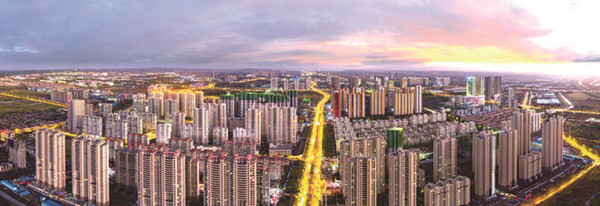Changchun Jingyue High-tech Industrial Development Zone
 |
A panoramic view of Changchun Jingyue High-tech Industrial Development Zone. [Photo/jingyue.gov.cn] |
Changchun Jingyue High-tech Industrial Development Zone was established in August 1995 in the city of Changchun -- capital of Northeast China's Jilin province -- as a tourism economic development zone, but acquired its current name in 2011. It was upgraded to a national-level high-tech industrial development zone in August 2012 by the State Council.
Located in the southeast of Changchun's downtown area, the zone covers an area of 478.7 square kilometers. It boasts Asia's largest artificial forest, the Xinli Lake national water conservation scenic area and the Yitong River -- Changchun's mother river. The green coverage of the entire area is estimated to be more than 65 percent.
The zone boasts rich educational and technological resources. It is home to 15 colleges and universities including Northeast Normal University, more than 70 key scientific research institutions and 17 key provincial scientific and technological cultural facilities -- such as the Changchun China Optical Science and Technology Museum.
It also boasts nearly 40,000 front-line scientific researchers and 200,000 in-campus students and undertakes more than 2,000 key scientific research projects in fields such as software information and automotive electronics.
It has three national 5A level tourist attractions, two national 4A level ones and is also home to the country's first film-themed park and first skiing museum. It also has the country's largest agricultural expo park, hosting several large-scale events each year.
The zone is boosting its modern service, cultural creativity and high-tech sectors. It is home to 784 high-tech companies, more than 1,000 tech companies and 25 technology incubators.
The zone emphasizes ecological and environmental protection and it is building an ecological district that combines the areas of sustainable economic development, society, population and resources.
